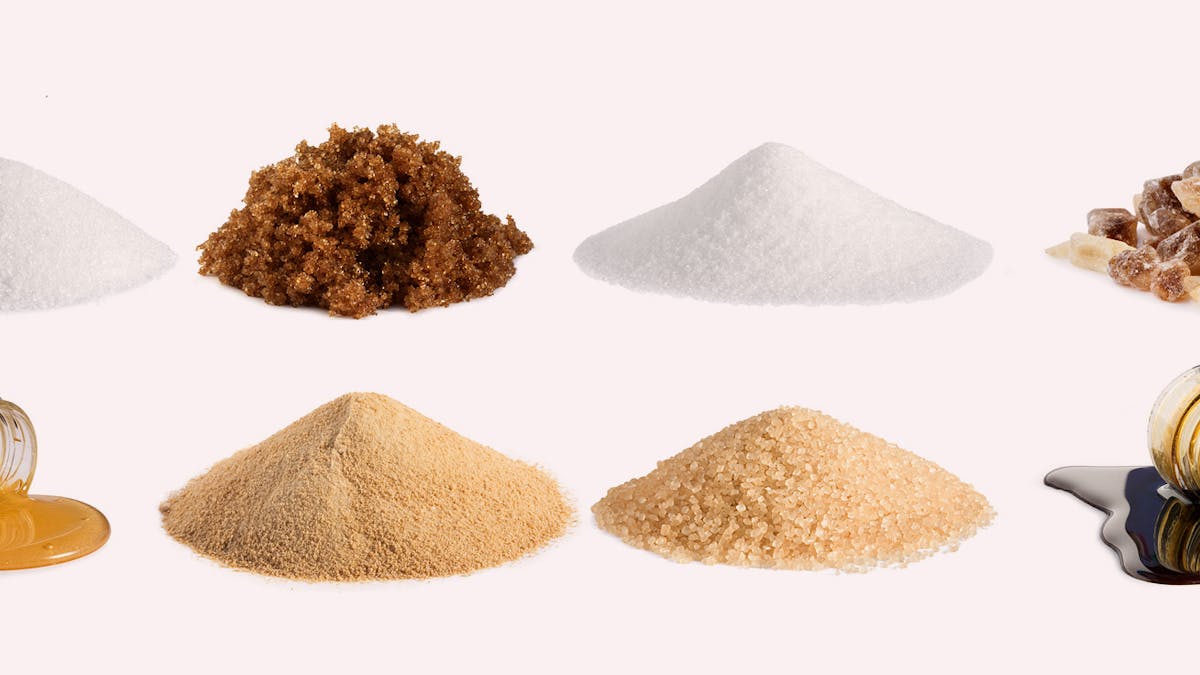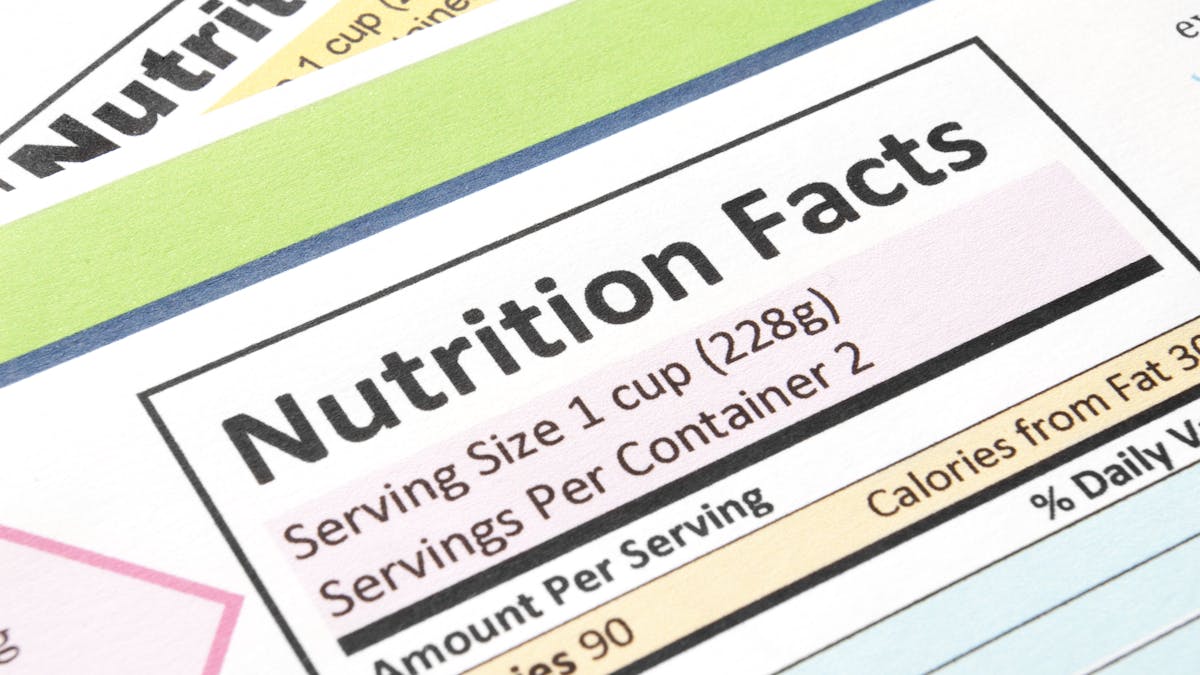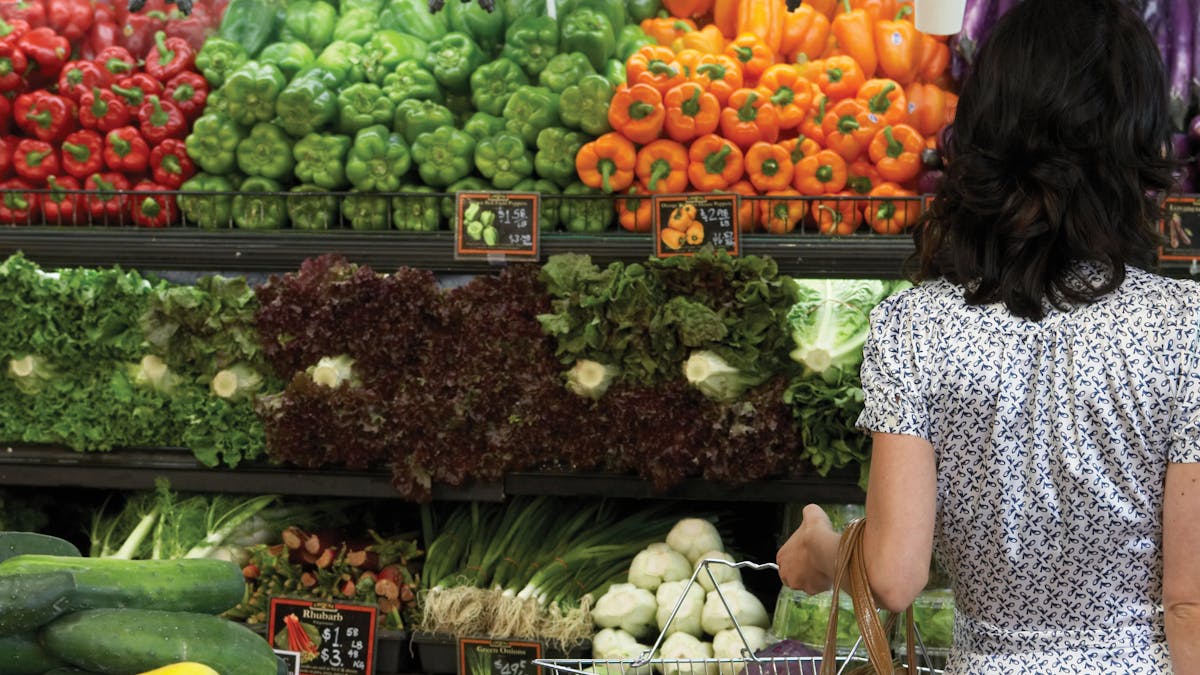Keto diet foods — top three mistakes at the grocery store
It all starts at the grocery store. If you want to succeed on a keto diet, you need to know how to shop for keto groceries.Here are three of the most common mistakes people make when buying groceries for a keto diet – and how to avoid them.
1. Highly processed food

Even on a keto diet, it’s possible to buy groceries that are potentially unhealthy. But not if you keep it “real.” Here’s how:
Buy whole food
Whole food has only one ingredient. Examples are meat, seafood, eggs, butter, oils, vegetables, fruit, and nuts.1 These foods should form the foundation of your keto diet.2 And there are so many delicious choices!
Want a list? Print our keto food list and bring it with you when you go grocery shopping.
Limit packaged food
Most of the packaged food products you find in grocery stores are ultra-processed.3 They also often contain added sugar and starch. For this reason, they should be minimized on a keto diet.
Fortunately, it’s easy to avoid highly processed food. Here’s how:
- Ignore the obvious
Sometimes the package speaks for itself. If it says anything like “cereal,” “cake,” “cookie,” “bread,” or “chips” — read no further. Walk away. Since these foods are typically high in carbohydrates, they’re not a good choice on a keto diet. - Ignore low carb products
If your store carries low carb versions of pastas, breads and cookies, we generally recommend that you avoid them. Most contain starch and other additives. Some contain sweeteners that may impede your progress.4 - Ignore “healthy” or “natural” labels
Many highly processed food products are labeled “healthy” or “natural.” Ignore these meaningless terms.5 Stick with single-ingredient, tasty keto foods as much as possible.
Buy minimally-processed packaged foods
Not all packaged foods are highly processed, but how do you know which to trust? The rule of thumb is to look for products with few ingredients.
Eggs, meat, and fish are great choices even though they’re often packaged.6
Some minimally-processed foods are packaged yet keto-friendly. These include butter, cheese, coconut oil, olive oil, cream, nut butters, shredded veggies (like coleslaw), and sour cream.
Some slightly more processed foods may be okay too. Choose no-sugar-added beef jerky, hollandaise, pesto, pizza sauce, salad dressings, sausage, tahini, and tapenade. Be sure to check the ingredients list and carb content, as carbs and additives vary among different brands.
2. Too many carbs
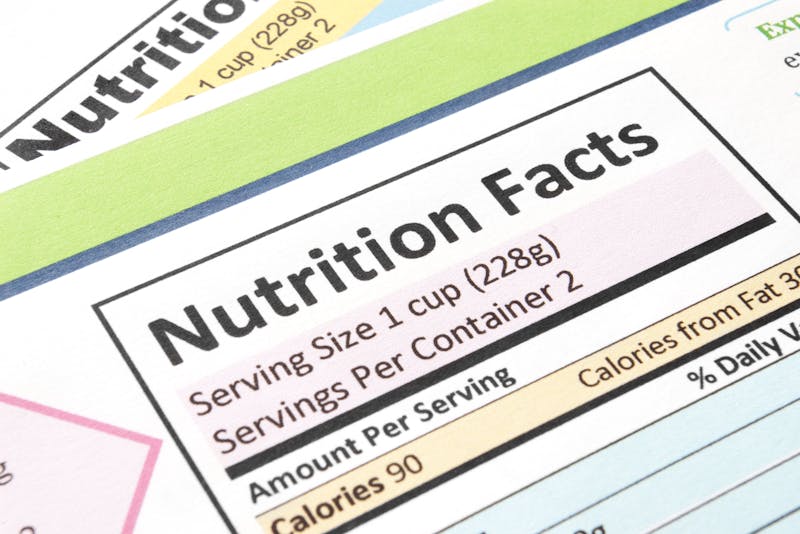



Now that you know how to avoid highly processed food, let’s fix the second keto grocery mistake: too many carbs.
For keto success, we recommend eating less than 20 grams of net carbs per day.7
Here’s how to keep carbs from sneaking into your house:
Avoid carb creep
Carbs add up.
The broccoli and carrots you ate for dinner, those strawberries with whipped cream you had for dessert, and the nuts and dark chocolate you enjoyed earlier in the day — they all add up.
Even when eating healthy keto foods, “a little bit of this” and “a little bit of that” might take you out of ketosis. If you’re not getting results on your keto diet, consider these grocery-shopping tips:
- Buy fewer high carb vegetables
Avoid stocking up on on high carb vegetables. Check out our keto vegetables guide for the best options.Our favorite vegetables are very low in carbs. Leafy greens, asparagus, avocado, and zucchini come to mind.You can enjoy other tasty veggies like broccoli, cauliflower, green beans, and brussels sprouts too, of course. But you may need to be a bit more careful with these since they contain a few more carbs.
- Buy less fruit
On a keto diet, your best bet is to avoid buying any fruit. If you want to eat some occasionally, check out our keto fruits and berries guide for the best options.Strawberries, raspberries, and blackberries are okay if you keep the serving size small (about 1/2 cup or less). Lemon and lime, in small amounts, work too.Technically, avocados and tomatoes are low-sugar fruits, but for convenience, we group them with vegetables.
- Buy fewer nuts and less dark chocolate
Nuts and dark chocolate (85% cocoa minimum) are keto-friendly in small portions. But because they’re both convenient and delicious, it can be easy to overeat these treats and end up going over your daily carb limit.Check out our keto nuts guide for the best options. For example, choose macadamia nuts or pecans instead of cashews. Take a look at our keto snacks guide to see the amount of carbs in different types of chocolate.Another common slip-up is getting too much almond flour in baked items that are keto friendly only when served in smaller quantities. So keep your eye on portion size and be mindful of how much almond flour you buy — and consume.
- Buy less cream cheese and Greek yogurt
These full fat dairy products can be okay in moderation, but both contain carbohydrates. Cream cheese has 1.5 to 2 grams of carbs per ounce (28 grams), and Greek yogurt has about 5 grams of carbs per 3/4 cup (170 grams). So go easy!
Calculate net carbs
Packaged foods often contain hidden sugars and starches.8 Avoid this trap by calculating the number of net carbs the food contains.9




As an example, consider the label on the chocolate bar to the left – the Green & Black’s 85% Cacao Bar.
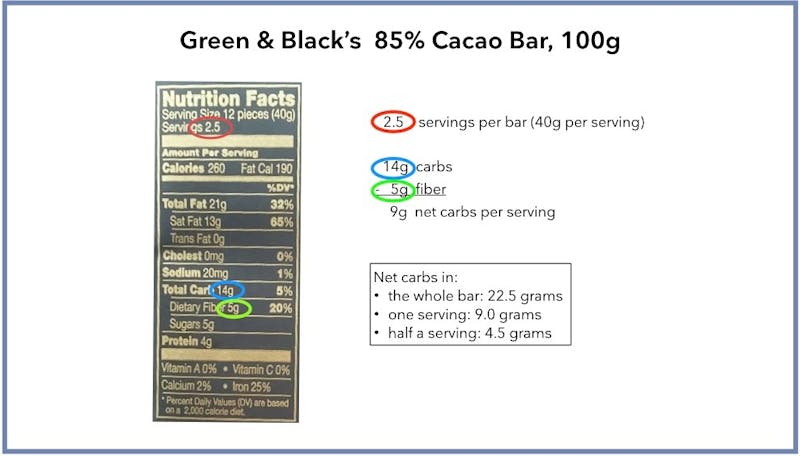



- Check the serving size
First, look at the serving size (circled in red, above). How much chocolate is in one serving? A square? A cup? Half the package? As you can see, the serving size for this chocolate is 40 grams, or 12 small squares. - Check carbs per serving
Second, check the total grams of carbohydrate per serving (circled in blue, above). This chocolate has 14 grams of total carbs per serving. - Calculate net carbs per serving
Third, check the grams of dietary fiber per serving (circled in green, above). Calculate net carbs by subtracting the fiber (green) from the total carbohydrates (blue). This chocolate has 9 grams of net carbs per serving (14 g carbs – 5 g fiber = 9 g net carbs). - Calculate how many net carbs you will eat
Finally, multiply the number of servings you’ll eat by the net carbs per serving.
Let’s say you want to eat six small squares of chocolate (about half a serving, or 20 grams). That’s 4.5 grams of net carbs (0.5 serving * 9 g net carbs).
But if you were to eat the whole chocolate bar (2.5 servings), you would get 22.5 grams of net carbs (2.5 servings * 9 net carbs) — more than an entire day’s worth of carbs on a keto diet.
This chocolate bar, when consumed in small amounts, is a keto-approved treat. But buyer beware — it’s easy to overeat.
Let’s look at the nutrition facts label for another dark chocolate option, Salazon’s Dark Chocolate with Sea Salt and Almonds:
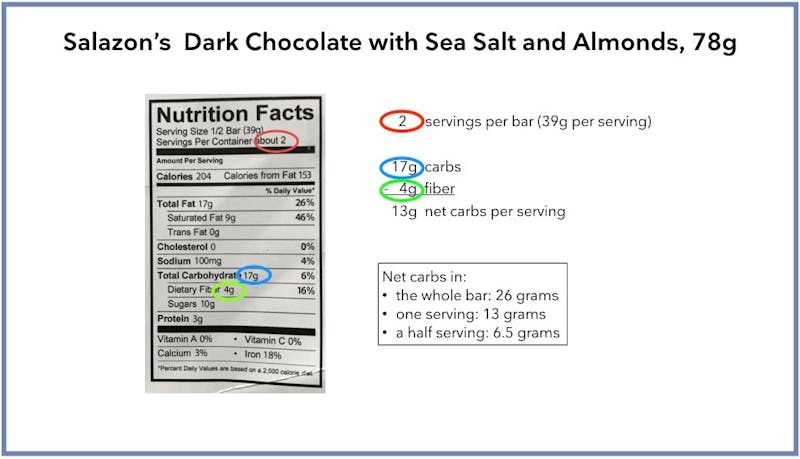



As you can see, this bar has 13 g of net carbs per serving.10 If you eat half a serving (in this case, ¼ of the bar, or 20 grams), you’d consume 6.5 g of net carbs.
This treat likely contains too many net carbs for many keto lifestyles. After looking at the nutrition facts label and quickly calculating the net carbs, you’ll know to put this bar back on the shelf.
For more information about the nutrition facts label, please check out our guide on how to use the nutrition facts label.
3. Potentially unhealthy ingredients
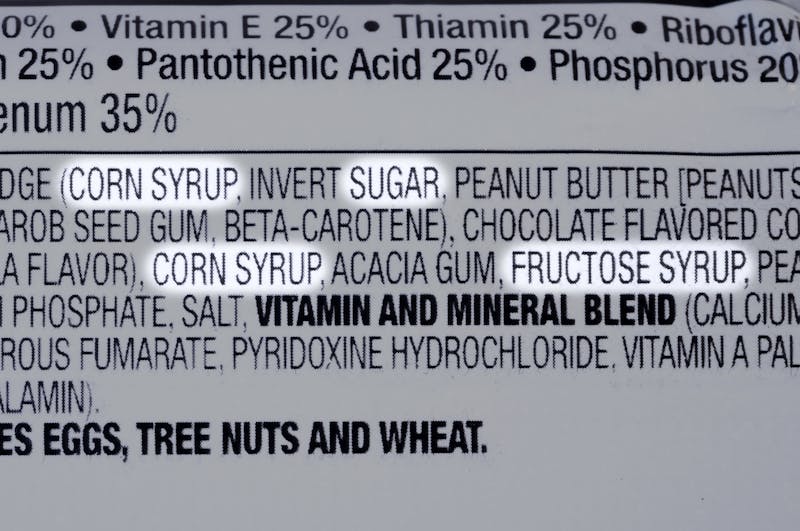



Almost all packaged foods include an ingredient list. Always make sure to check it before buying something new.
For keto success, avoid or limit the big five:
These foods are potentially unhealthy because of their impact on blood sugar and insulin:
- Sugar
- Grains
- Sweeteners
These foods are refined, industrial products with negative or unclear health effects:
- Trans fats (negative health impact)
- Highly processed vegetable oils (unclear health impact)
Avoid sugar
When making keto selections, try to avoid sugar in all its forms. Manufacturers sometimes come up with odd names to disguise sugar on their labels. In general, avoid:
- Any kind of sugar, syrup, malt or cane product
- Any ingredient ending with ‘ose’ (like lactose, maltose, or dextrose)
- All naturally sugary ingredients like honey, fruit juice concentrates and dried fruit
For a detailed list of the dozens of possible names for sugar, click through to our guide, Ingredients to avoid, or print this cheat sheet to take with you to the market.
Avoid grains
Most of the starch in our diets comes from grains. Wheat and corn are the main ones, but any kind of grain or flour (except nut flour) can add lots of carbohydrates to a food product. This can spell trouble for keto eaters.
For a list of all the different names for wheat, grains, and other starchy additives, check out our list of starches to limit.
Avoid artificial sweeteners and other chemicals
Low carb sweeteners may potentially stall weight loss and trigger cravings for sweets.11 Our recommendation is to eliminate or strongly limit them from your keto diet and help banish sugar cravings for good.
Click through for a more detailed list of artificial sweeteners.
Avoid trans fats and limit highly-processed vegetable oils
Although keto emphasizes fat, not all fats are created equal. Put healthy fats in your cart and stay away from altered and industrially extracted fats.
- Avoid industrial trans fats — anything partially hydrogenated or any ingredient like margarine or shortening. Research suggests that these fats may have negative effects on heart health.12 Fortunately, trans fats are banned in Europe and will be completely eliminated from the US food supply by 2021.
- Limit highly-processed vegetable seed oils — canola, corn, cottonseed, grapeseed, safflower, and soybean oils. We recommend limiting these oils because they’re highly processed omega-6 fatty acids.
Although both omega-6 and omega-3 fats are essential, meaning we must get them from food, most diets today provide far more omega-6 than we need.13 Additionally, the health effects of vegetable oils are still unclear. Learn more in our guide, Vegetable oils: are they healthy?
4. Summary




Avoid these classic mistakes — highly processed food, too many carbs and potentially unhealthy ingredients — and put keto success within reach. With a little practice, it’s easy to load up your cart with a delicious selection of whole food — and some minimally processed keto extras, too.
Now go forth and grocery shop, keto-style!
More
There are two companion guides with more information about ingredients to avoid, and how to decipher food labels:
In addition, check out our main keto foods guide below to understand the basics about keto foods, and our keto diet foods list, for fast and real-food inspired grocery shopping!
For all the keto basics, check out our simple but thorough beginner’s guide to the keto diet:
Practical low carb guides
Keto diet foods — top three mistakes at the grocery store - the evidence
This guide is written by Jennifer Calihan and was last updated on March 10, 2023. It was medically reviewed by Dr. Bret Scher, MD on October 3, 2022.
The guide contains scientific references. You can find these in the notes throughout the text, and click the links to read the peer-reviewed scientific papers. When appropriate we include a grading of the strength of the evidence, with a link to our policy on this. Our evidence-based guides are updated at least once per year to reflect and reference the latest science on the topic.
All our evidence-based health guides are written or reviewed by medical doctors who are experts on the topic. To stay unbiased we show no ads, sell no physical products, and take no money from the industry. We're fully funded by the people, via an optional membership. Most information at Diet Doctor is free forever.
Read more about our policies and work with evidence-based guides, nutritional controversies, our editorial team, and our medical review board.
Should you find any inaccuracy in this guide, please email andreas@dietdoctor.com.
Are you concerned about consuming butter, meat, and other foods high in saturated fat? You likely don’t need to be.
Although still somewhat controversial, recent large systematic reviews haven’t shown a strong connection between eating saturated fat and increased heart disease risk, nor have they consistently shown that substituting polyunsaturated fats for saturated fats meaningfully reduces heart disease risk:
Open Heart 2016: Evidence from randomised controlled trials does not support current dietary fat guidelines: a systematic review and meta-analysis [strong evidence]
British Medical Journal 2015: Intake of saturated and trans unsaturated fatty acids and risk of all cause mortality, cardiovascular disease, and type 2 diabetes: systematic review and meta-analysis of observational studies [observational studies; weak evidence]
British Medical Journal 2016: Re-evaluation of the traditional diet-heart hypothesis: analysis of recovered data from Minnesota Coronary Experiment (1968-73) [systematic review of randomized trials; strong evidence]
Nutrition Journal 2017: The effect of replacing saturated fat with mostly n-6 polyunsaturated fat on coronary heart disease: a meta-analysis of randomised controlled trials
[strong evidence]Learn more here: A user guide to saturated fat ↩
Many of these are the same or similar to the foods our ancestors consumed for thousands (possibly millions) of years:
Annual Review of Nutrition 2014: Evolutionary adaptations to dietary changes [overview article; ungraded] ↩
In a recent analysis of over 230,000 food and beverage products sold in the US, 71% were considered ultra-processed:
Nutrients 2019: The healthfulness of the US packaged food and beverage supply: a cross-sectional study [ingredient analysis study; ungraded] ↩
For instance, many low carb sweets and bars contain sugar alcohols, which can be partially digested and absorbed into your bloodstream. The most common and worst offender is maltitol, which has a relatively high glycemic index of 35 and can raise blood sugar and insulin levels:Nutrition Research Reviews 2003: Health potential of polyols as sugar replacers, with emphasis on low glycaemic properties [overview article; ungraded evidence]
European Journal of Clinical Nutrition 1994:: Digestion and absorption of sorbitol, maltitol and isomalt from the small bowel: a study in ileostomy subjects [randomized trial; moderate evidence]
Gastroentérologie Clinique et Biologique 1991: Clinical tolerance, intestinal absorption, and energy value of four sugar alcohols taken on an empty stomach [randomized trial; moderate evidence] ↩
At this time, no formal definition for use of the word “natural” on food labels has been issued by the U.S. Food and Drug Administration (FDA) or U.S. Department of Agriculture (USDA). ↩
Don’t let the egg’s high cholesterol content worry you. Eating eggs doesn’t seem to raise cholesterol levels very much in most people and doesn’t increase the risk of heart disease:
Nutrients 2018: Dietary cholesterol contained in whole eggs Is not well absorbed and does not acutely affect plasma total cholesterol concentration in men and women: results from 2 randomized controlled crossover studies [moderate evidence]
American Journal of Clinical Nutrition 2015: The effect of a high-egg diet on cardiovascular risk factors in people with type 2 diabetes: the Diabetes and Egg (DIABEGG) study-a 3-mo randomized controlled trial [moderate evidence]
Nor do you need to fear meat, which provides a satisfying, high-quality source of protein. The evidence linking it to heart disease, cancer, and other health issues is very weak: Guide to red meat: is it healthy? ↩
Results from many clinical trials suggest that strictly limiting carbs can be very effective for losing fat and controlling blood sugar:
Obesity Reviews 2016: Impact of low carbohydrate diet on body composition: meta-analysis of randomized controlled studies. [strong evidence]
Nutrition & Diabetes 2017 Twelve-month outcomes of a randomized trial of a moderate carbohydrate versus very low carbohydrate diet in overweight adults with type 2 diabetes mellitus or prediabetes [randomized trial; moderate evidence]
Nutrition & Metabolism 2008: The effect of a low carbohydrate, ketogenic diet versus a low-glycemic index diet on glycemic control in type 2 diabetes mellitus [randomized trial; moderate evidence] ↩
Sugar is added to many foods. In one review of more than 40,000 products at a large Canadian grocery retailer, 66% of the items were found to contain at least one type of added sugar:
Canadian Medical Association Journal Open 2017: Added sugar in the packaged foods and beverages available at a major Canadian retailer in 2015: a descriptive analysis [ingredient analysis study; ungraded] ↩
“Net carbs” are the carbs digested and absorbed by your body. Fiber isn’t counted as a net carb because it’s generally accepted that it can’t be digested and absorbed by the human digestive tract:
Nutrients 2010: Effects of dietary fiber and its components on metabolic health [overview article; ungraded] ↩
Net carbs = sugar + starch (starch isn’t listed on nutrition facts labels). This bar has 10 g sugar + 3 g starch for a total of 13 g net carbs. ↩
In some people, artificial sweeteners appear to partially activate the “food reward” pathway responsible for cravings:
The Yale Journal of Biology and Medicine 2010: Gain weight by “going diet”? Artificial sweeteners and the neurobiology of sugar cravings [overview article; ungraded]
Physiology & Behavior 2016: Recent studies of the effects of sugars on brain systems involved in energy balance and reward; relevance to low calorie sweeteners [overview article; ungraded] ↩
Consuming trans fats has been shown to raise LDL cholesterol, lower HDL cholesterol, and increase inflammatory markers: The New England Journal of Medicine 1990: Effect of dietary trans fatty acids on high-density and low-density lipoprotein cholesterol levels in healthy subjects [randomized trial; moderate evidence]
Lipids 2010: Effects of partially hydrogenated, semi-saturated, and high oleate vegetable oils on inflammatory markers and lipids [randomized trial; moderate evidence] ↩
From the days of our earliest ancestors up to the past hundred years or so, it’s estimated that humans consumed omega-6 and omega-3 fats in a roughly 1:1 ratio. Today, that ratio is estimated to be around 16:1, on average:Biomedicine & Pharmacotherapy 2006: Evolutionary aspects of diet, the omega-6/omega-3 ratio and genetic variation: nutritional implications for chronic diseases [overview article; ungraded] ↩

